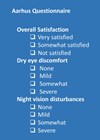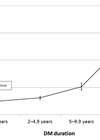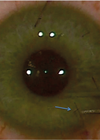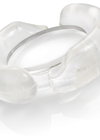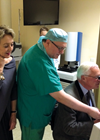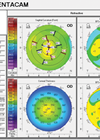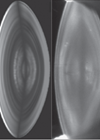Ophthalmology
Measuring patient-reported outcomes after refractive surgery to assess patient satisfaction
Patient-reported outcomes enable surgeons to evaluate patients’ symptoms and satisfaction after laser vision correction. The great majority of patients are pleased with their outcomes from laser vision correction, whether it is with photorefractive keratectomy, laser in-situ keratomileusis (LASIK), or small...
Newer generation IOL platforms designed for high-quality visual performance after cataract surgery
Expanding intraocular lens (IOL) capabilities provide broadening options, ranging from next-generation monofocal IOLs for basic cataract surgery, to specialised premium IOLs for lens-based presbyopia correction and astigmatism correction at the time of cataract surgery. Rod McNeil considers several newer alternative...
Cataract incidence rates in patients from the UK suffering with diabetes mellitus
The authors summarise the main findings from a recent study which investigated the incidence rates of cataract in patients with or without diabetes mellitus (DM). Background to the study Worldwide, the World Health Organization (WHO) estimates that 253 million people...
What you learn after performing 10,000 cataracts
What do you do when the anterior chamber shallows, or the zonules give way? How do you handle the stubborn epinuclear plate? Raymond Radford shares the benefit of his experience when dealing with tricky cataract surgery. Firstly, you realise you...
Advances in cataract surgery
This article covers recent clinical findings in mydriasis and anaesthesia for cataract surgery, shared by Sathish Srinivasan and Keith Davey at a surgical meeting in Manchester. Towards dropless cataract surgery Day case cataract surgery is the standard of care in...
Refraction planning in cataract: avoid creating an unhappy patient
“It is much more important to know what sort of a patient has a disease than what sort of a disease a patient has.” William Osler The focus of this paper is the prevention of an unhappy patient following cataract...
Troubleshooting in LASIK
Contemporary laser in situ keratomileusis (LASIK) is safe and effective. It remains the dominant intervention in routine refractive surgery for a good reason: predictable results, rapid visual recovery, and relatively simple strategies for revision treatment. Over 95% of patients are...
Intraocular lens technology to deliver enhanced optical performance after cataract refractive surgery
Modern cataract surgery aims to provide patients with the best possible visual outcome with the least dependence on spectacles and minimal or no complications and to treat both cataract and refractive errors with a single procedure. Phacoemulsification is the standard...
The David J Apple International Laboratory for Ocular Pathology – a legacy of pioneering IOL research
David Apple and Gerd Auffarth. The Apple Lab at the David J Apple Center for Vision Research in Heidelberg is a thriving international laboratory for research into intraocular devices. The lab continues the work of David J Apple, a world-renowned...
Surgical options for the treatment of hyperopia
The modern refractive surgeon has a variety of options available to treat patients with hyperopia who wish to be independent of spectacles and contact lenses. Unlike in low myopia where presbyopic patients may have the ability to see well for...
The refractive index in the eye lens – implications for clinical practice and optical design
The eye may appear to be a comparatively simple organ and yet its optical system is complex and continues to be a source of investigation and research. The major optical elements are considered to be the cornea and the lens...
Surgical treatment of high myopia
Although several excellent modalities are available for correcting high myopia, the surgical treatment of this condition remains one of the biggest challenges for refractive surgeons; this group of patients is often very dependent on contact lenses. If these patients become...


